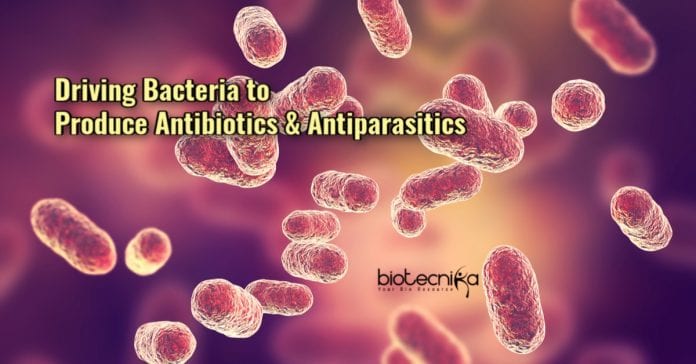Driving Bacteria to Produce Antibiotics
A method to stimulate the production of new antiparasitic and antibiotic compounds from the genomes of actinobacteria has been developed by scientists. Actinobacteria are a major source of drugs like streptomycin and actinomycin. The journal eLife published the results.
Satish Nair, Urbana-Champaign professor of biochemistry at the University of Illinois, who led the research, said that for decades, scientists wanted to overcome the problems they face while studying many antifungal, antiparasitic, antibiotic compounds bacteria produce. Bacteria don’t produce as much as molecules they are capable of making in laboratory conditions. This is because they produce those molecules only when they are under threat. Certain small-molecule hormones regulate this.
Nair and his team of researchers wanted to study how these hormones regulate the production of antibiotics in cyanobacteria. The researchers hope to stimulate the microbes to produce new medically significant compounds by introducing the right combination of hormones to the bacteria.
For this purpose, they studied a more chemically stable hormone called Avenolide. The production of avermectin, an antiparasitic compound in a soil microbe is regulated by Avenolide. Ivermectin, a chemically modified version of this compound, is used to treat a disease transmitted by flies called
river blindness used to blind millions of people, mostly in sub-Saharan Africa.Iti Kapoor, a chemistry graduate student, developed avenolide in the lab using a more streamlined process for synthesis than the previously available methods. Using this approach, they studied the hormone’s interactions with its receptor both outside and inside bacterial cells.
Iti and biochemistry graduate student Philip Olivares studied how the hormone interacts with the receptors and how the receptor binds to DNA in the absence of hormones, using a method called X-ray crystallography.
They found that the receptor loses its ability to cling to DNA when the hormone binds to it. This allows the organism to produce antibiotics and other defensive compounds by turning off the brakes.
The researchers studied dozens of actinobacteria genomes to find sequences that had the right traits to bind to their receptor or to similar receptors by knowing which regions of the receptor are involved in binding to the hormone and to the DNA. They were able to identify 90 actinobacteria that appear to be regulated by avenolide or other hormones in the same class by this process called genome mining.
The researchers are planning to grow those 90 bacteria in the laboratory and see what molecules they produce on adding chemically synthesized hormones. The new study could enable scientists to produce large quantities of molecules that are difficult to make in the lab.
Editor’s Note; Driving Bacteria to Produce Antibiotics, University of Illinois, avenolide regulating production of the antiparasitic compound.






























